CQ Insurance Database Design: ER Diagram, Business Rules, and Schema
VerifiedAdded on 2023/06/13
|6
|661
|323
Project
AI Summary
This document presents a database design project for CQ Insurance, encompassing an Entity-Relationship (ER) diagram and a logical schema. The ER diagram illustrates the relationships between entities such as agentsDetails, customerDetails, accidentsRecord, policyDetails, propertyDetails, and paymentDetails. The design incorporates business rules that define the relationships between these entities, such as one-to-many relationships between customerDetails and related entities like propertyDetails and accidentsRecord. Assumptions are made regarding primary and foreign keys within each entity. The logical design outlines the structure of the database tables, specifying attributes, primary keys, and foreign key relationships to ensure data integrity and efficient data management. This project provides a comprehensive overview of the database structure required to manage CQ Insurance's data effectively. Desklib offers a variety of resources, including past papers and solved assignments, to aid students in their studies.
1 out of 6
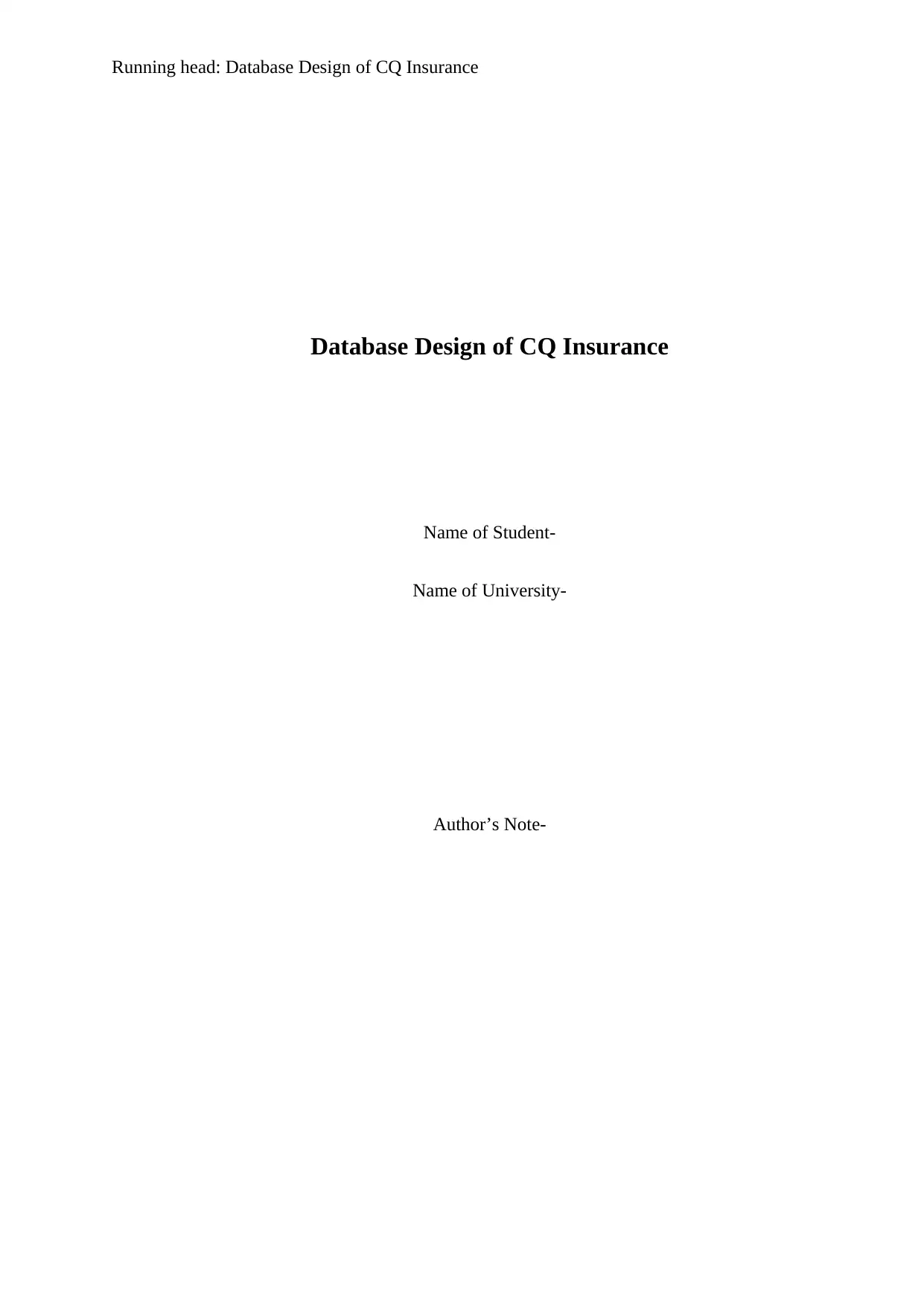
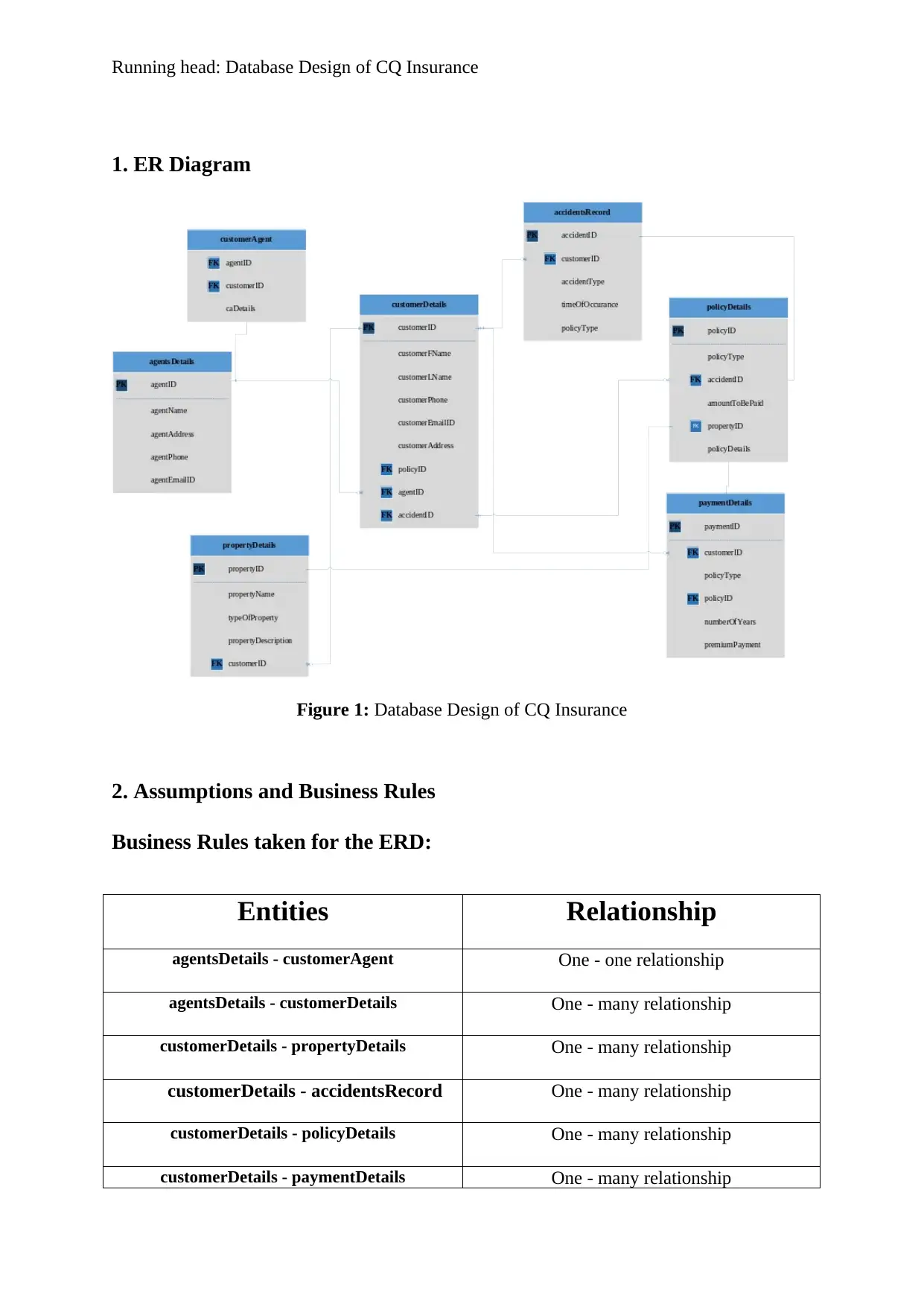
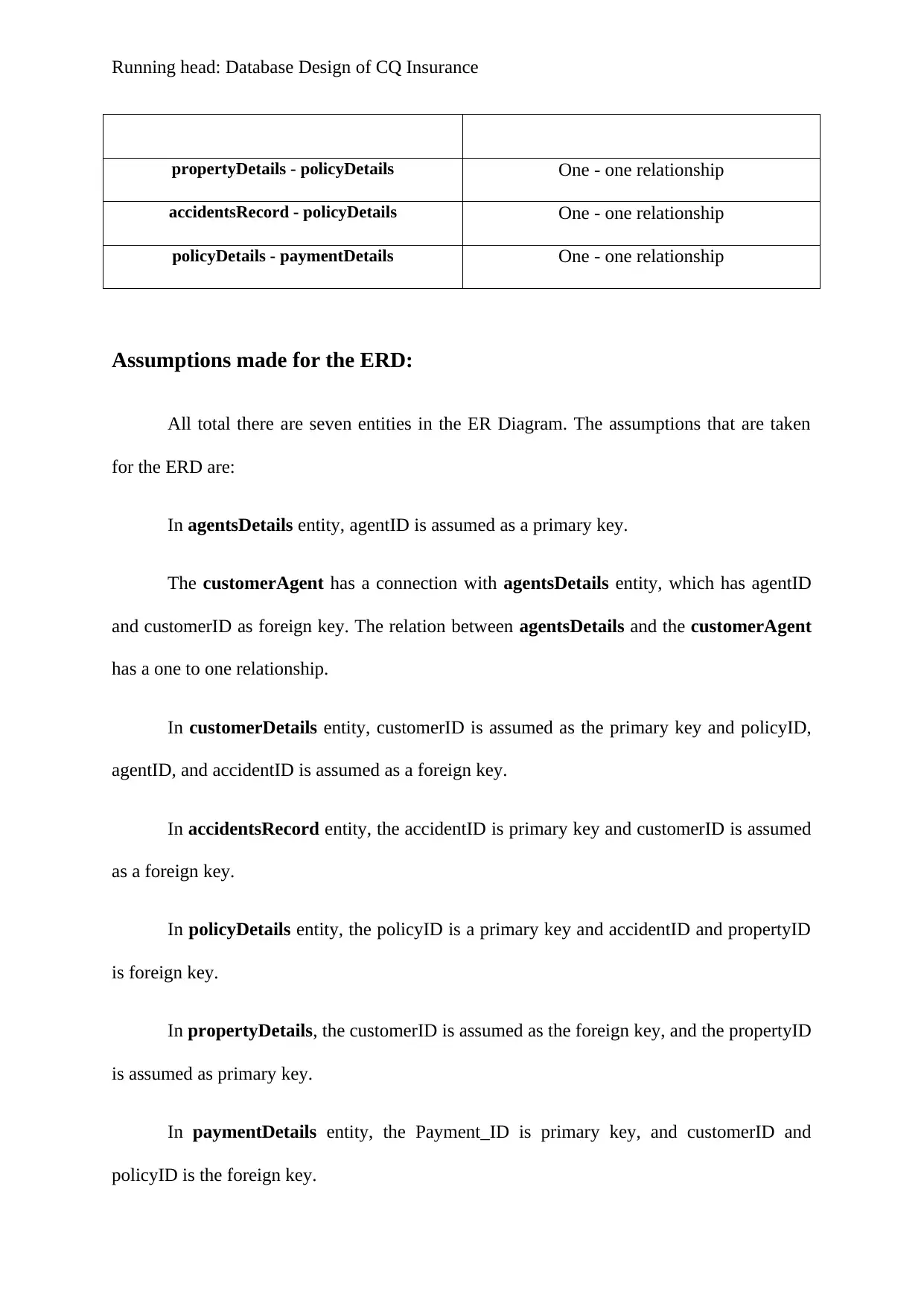

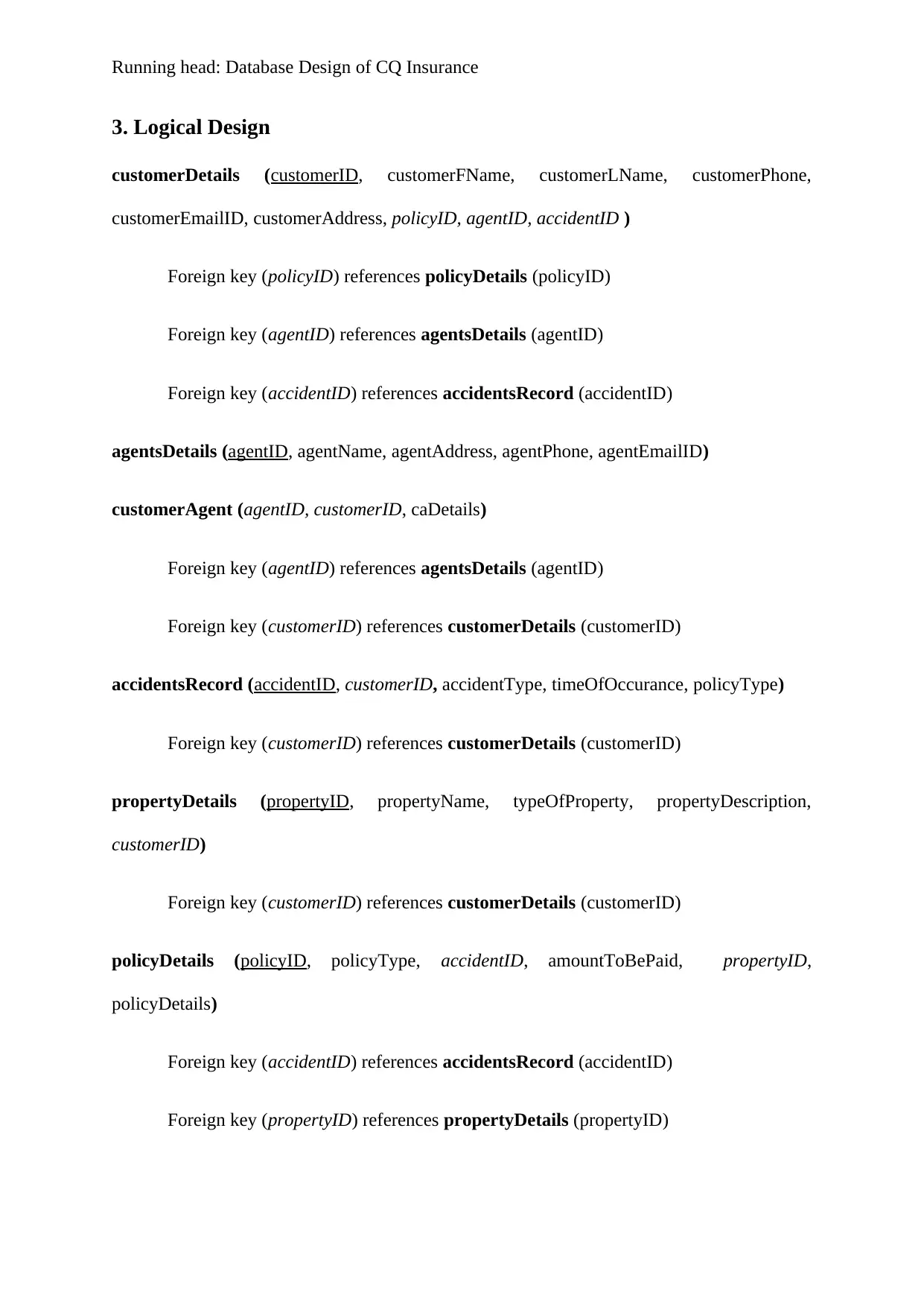

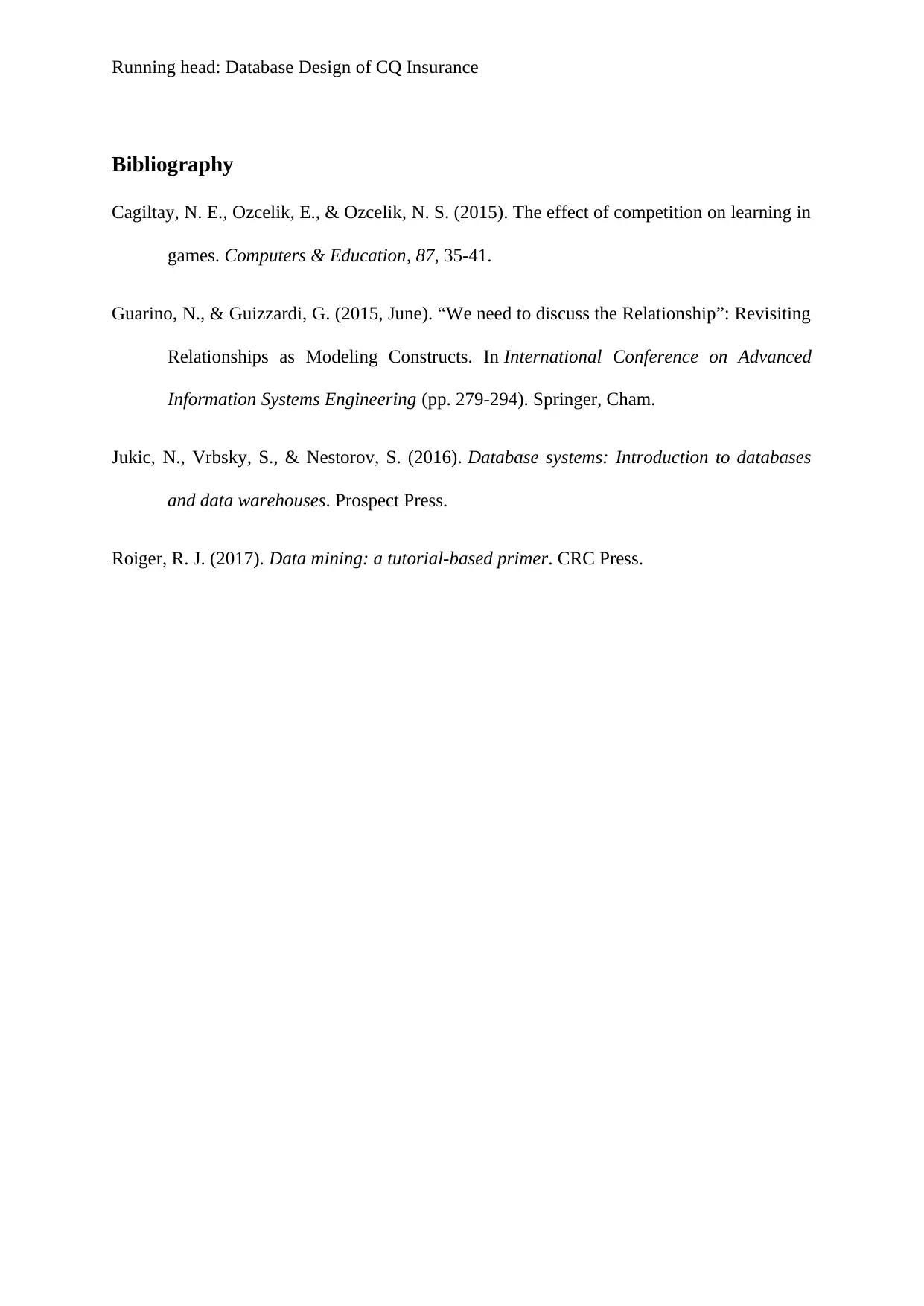





![[object Object]](/_next/static/media/star-bottom.7253800d.svg)